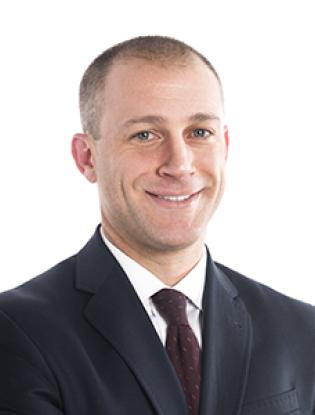Benjamin Cahan, M.D.

In medicine, we can combine leading-edge science, ingenuity and innovation with warmth and kindness to try to help the patient and their loved ones as best we can.
Benjamin Cahan, M.D., is a radiation oncologist and assistant clinical professor in the Department of Radiation Oncology at City of Hope | South Pasadena.
Dr. Cahan specializes in all forms of radiation treatment including emerging treatments, such as image-guided radiotherapy, stereotactic radiosurgery and stereotactic body radiation therapy.
Dr. Cahan earned his medical degree from the University of California Los Angeles (UCLA) David Geffen School of Medicine, from which he graduated with Alpha Omega Alpha honors. His training continued with an internship at UCLA-Olive View Medical Center. He then joined City of Hope in 2012 as a resident in radiation oncology. In 2015, he was named chief resident, a position he held until joining our faculty full-time at City of Hope | South Pasadena in 2016.
Dr. Cahan always puts his patients first. His research is focused on the impact of therapies on patients' quality of life. His approach to clinical practice focuses on providing both excellent medical treatment and strong support and reassurance, to reduce his patients’ anxiety. He fully subscribes to City of Hope's “body and soul” credo. In his words: “We must care for our patients' entire selves, and not just their disease.”
Mission Hills Radiation Oncology
Suite 100
Mission Hills, CA 91345
California Medical License, Medical Board of California
2011, M.D., David Geffen School of Medicine at University California Los Angeles, Los Angeles, CA
2005, Postbaccalaureate Premedical Program, Columbia University, New York, NY, Post-baccalaureate Premedical Program
2001, B.A. in Economics, Columbia University, New York, NY, B.A. Economics
2015-2016, Chief Resident, Radiation Oncology, Department of Radiation Oncology, City of Hope, Duarte, CA
2012-2015, Resident, Radiation Oncology, Department of Radiation Oncology, City of Hope, Duarte, CA
2016-present, Radiation Oncologist and Assistant Clinical Professor, Department of Radiation Oncology, City of Hope, Mission HIlls and Santa Clarita, CA
2015, Clinical Investigation Training Program Scholar, City of Hope
2010, Alpha Omega Alpha Medical Honors Society, UCLA
2001, David Estabrook Romine Scholar, Columbia University
- Cahan B, Kim JH, Schultheiss TE, Wong JYC, Chen YJC. “Stage I and II Endometrial Adenocarcinoma: Analysis of 2009 FIGO Staging Revision and Impact on Survival by Adjuvant Therapy.” Am J Clin Oncol 2018, Mar(3):3026
- Cahan BL, Chen YJC. “Field and Dose for Primary Central Nervous System Lymphoma After Chemotherapy; In Regard to Yahalom et al.” Int J Radiation Oncol Biol Phys 2015, Oct 1;93(2):4712
- Demanes DJ, Banerjee R, Cahan BL, Lee SP, Park SJ, Fallon JM, Reyes P, Van TQ, Steinberg ML, Kamrava MR. “Ureteral stent insertion for gynecologic interstitial high-dose-rate brachytherapy.” Brachytherapy. 2015 MarApr;14(2):24551
- Han J, Girvigian MR, Chen JC, Miller MJ, Lodin K, Rahimian J, Arellano A, Cahan BL, Kaptein JS. “A comparative study of stereotactic radiosurgery, hypofractionated, and fractionated stereotactic radiotherapy in the treatment of skull base meningioma.” Am J Clin Oncol. 2014 Jun;37(3):25560
- Khesbak Z, Cahan B, Appelberg S, Deng-Bryant Y, Prins ML. “Localization of GAPDH expression following controlled cortical impact in juvenile rats.” Journal of neurotrauma, 2009; 26:A47.